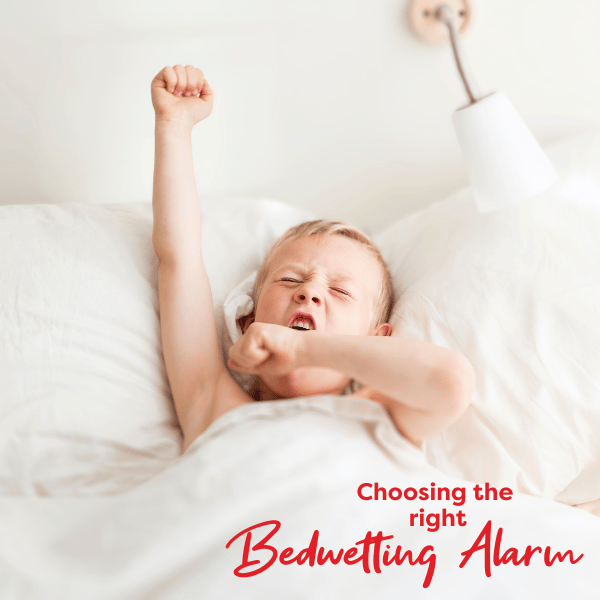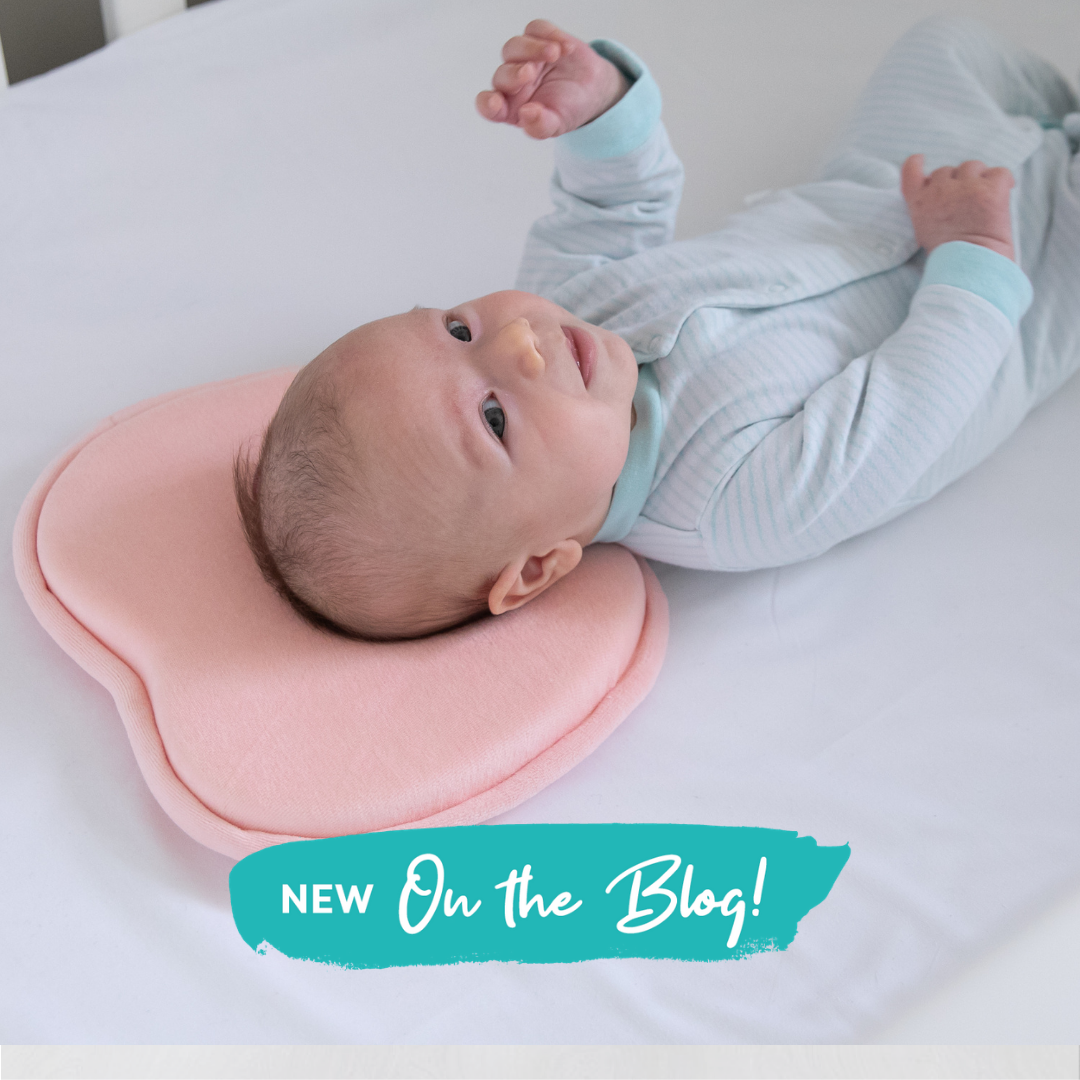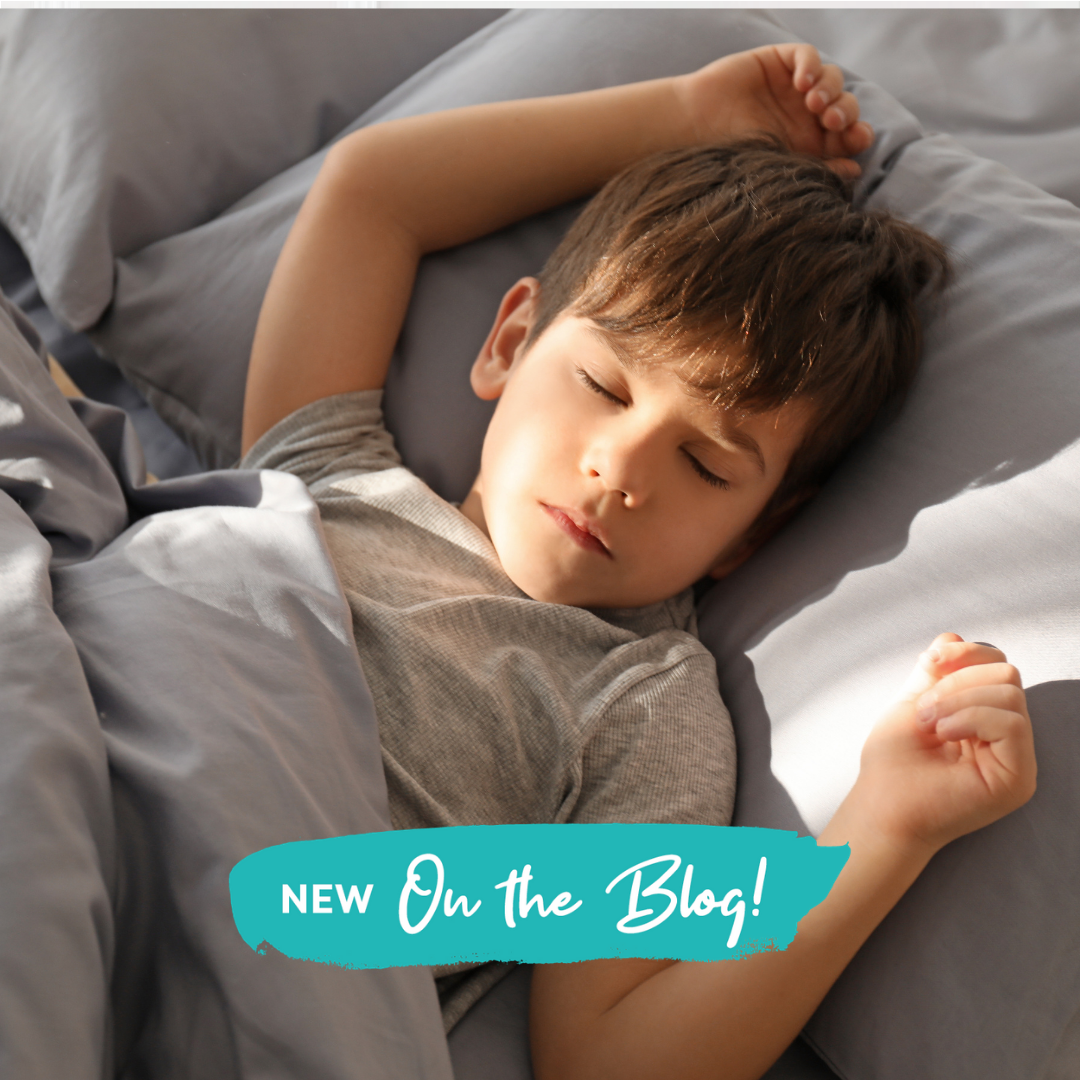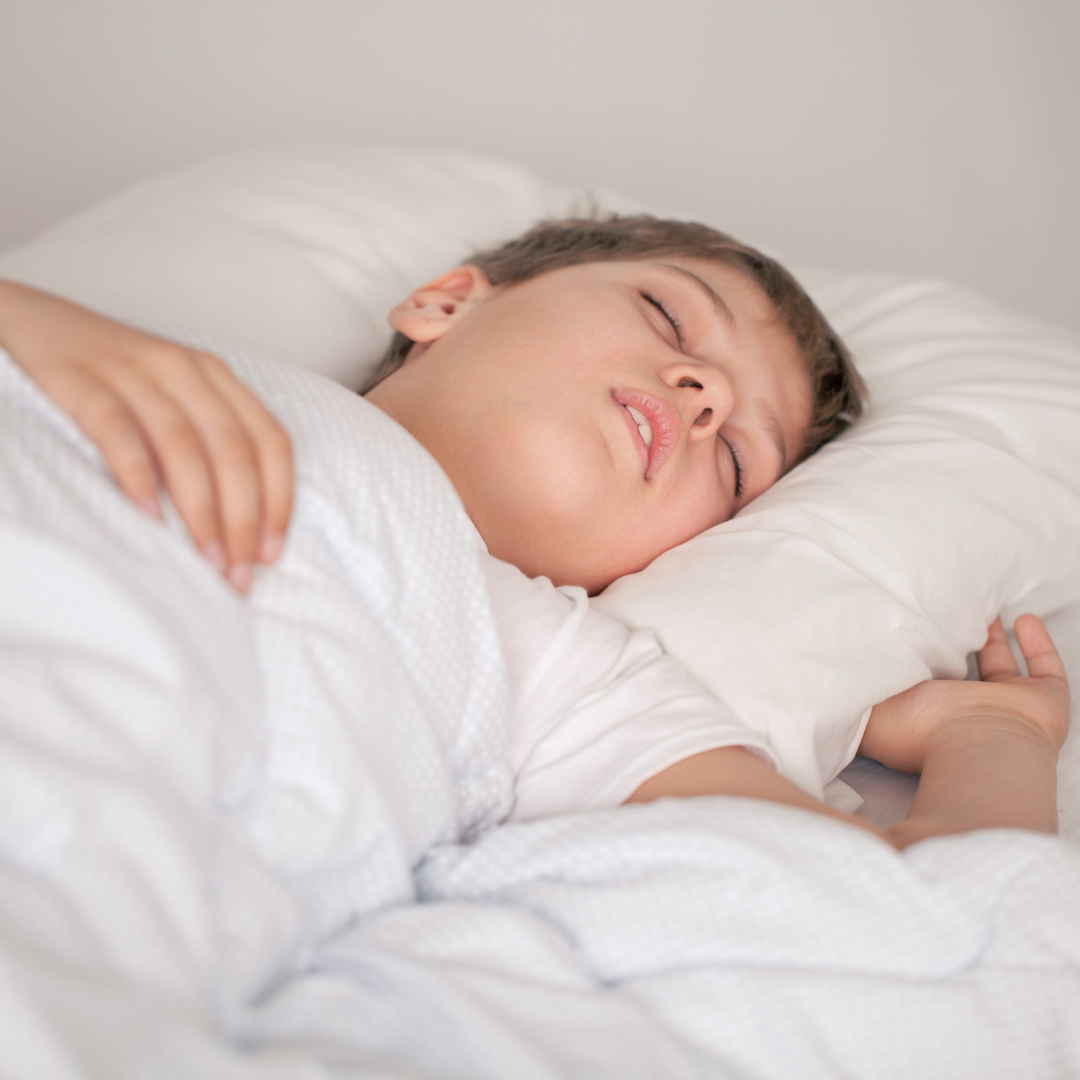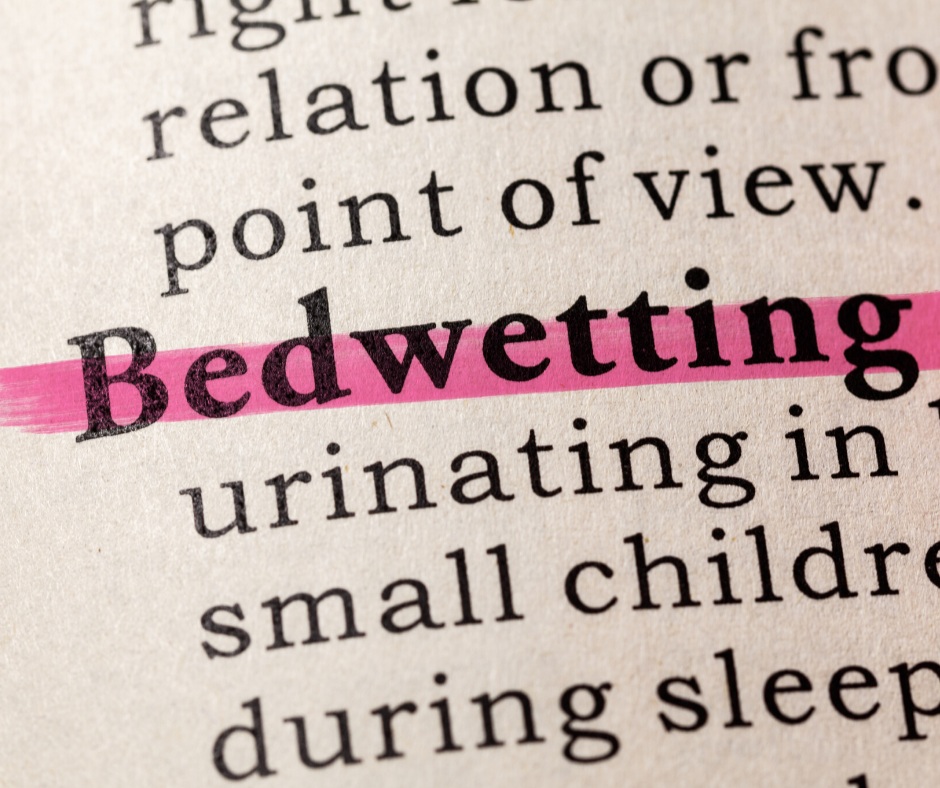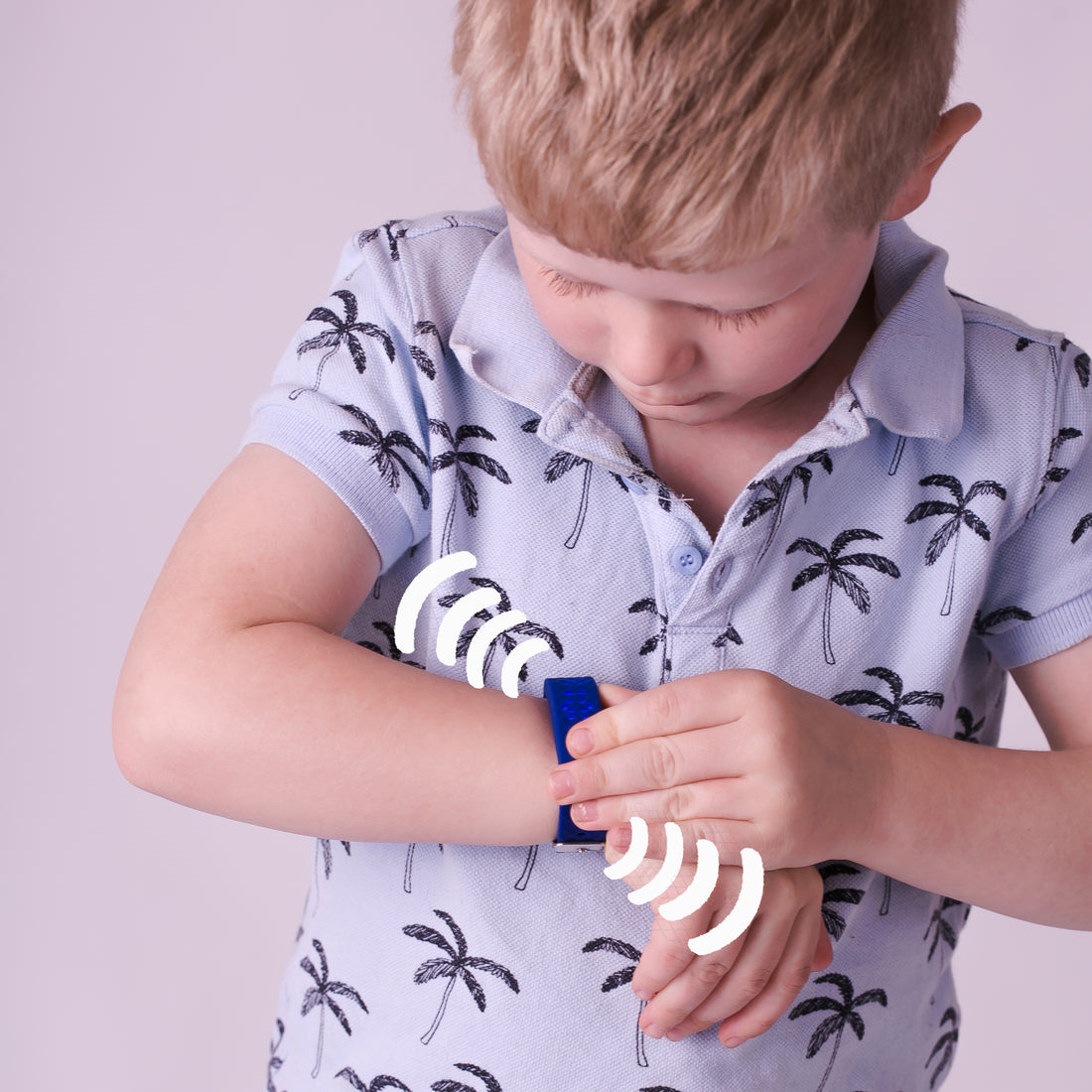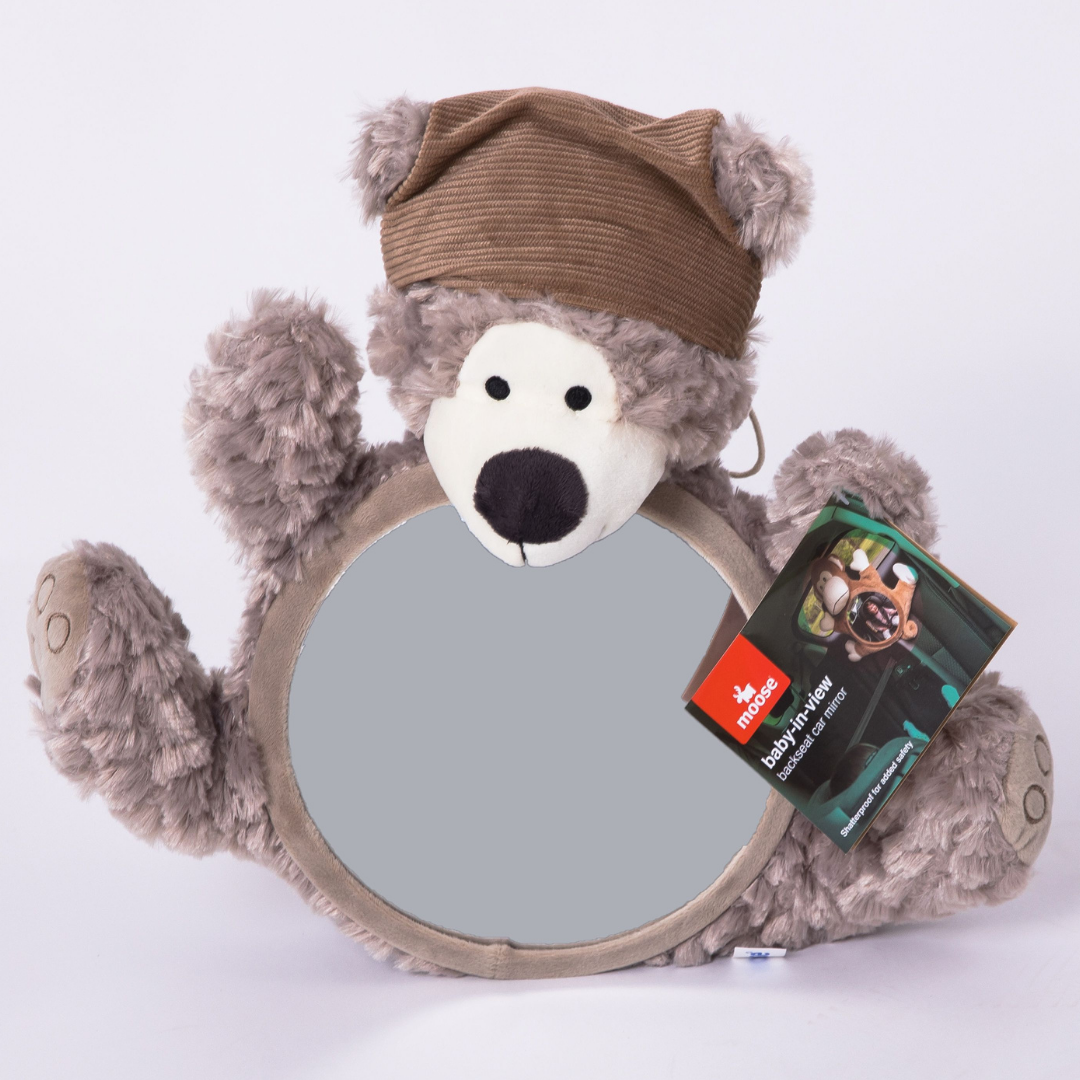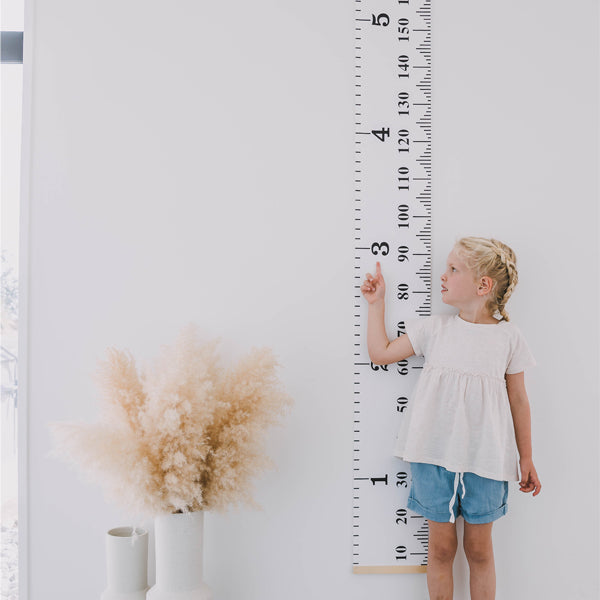News
Choosing the right bedwetting alarm
What's the best bedwetting alarm for my child? At first nocturnal enuresis (best known as bedwetting) sounds like a disease, but it’s not. Even so, in some children it can cause serious embarrassment and poor self-esteem. What is Nocturnal Enuresis? Nocturnal enuresis, in layman’s terms, is bedwetting. If you have a child over the age of six who is wetting the bed, you may have tried everything and now you are wondering if there is any help. There is, and it’s called a bedwetting alarm. How does a bedwetting alarm work? One of the main causes of bed wetting in children is a combination of deep sleeping patterns and over production of urine. Making use of the best bedwetting alarms can help teach a child’s body to better respond to a full bladder, as well as help break the deep sleep cycles that are typical of this behaviour. An electronic bedwetting alarm sounds an alert as soon as a child begins to urinate. Bedwetting alarms are designed to assist bedwetters in training their brains to react to their full bladders by awakening and using the toilet. A bedwetting alarm “senses” moisture as the first drops of urine are released, and sounds a shrill alarm, waking the child. A feeling of bladder fullness will eventually replace the sound of the bedwetting alarm as the signal to the sleeper’s brain that it’s time to get up and visit the toilet. Bedwetting alarm therapy is actually a type of behavioral conditioning. Bedwetting alarms are 100% safe and commonly prescribed by Continence Nurses as a way to stop bedwetting. There are different types of alarms which works in slightly different ways to suit your specific needs. We've found the best bedwetting alarms: Best Bedwetting Alarms #1 Wearable Bedwetting Alarms (with cord) With a wearable alarm, the sleeper places the moisture sensing device in his or her pyjama bottoms or underwear (in the line of fire!). A wearable bedwetting alarm reacts to the urine almost immediately. This type of bedwetting alarm is a design in which the child wears the moisture sensor, which is connected to the alarm device by means of a cord, in or on their underwear or pajamas. The cord usually runs from the sensor under the pyjama top and attaches to the collar of the child's pyjama top. WetStop3 is with little doubt the best wearable bedwetting alarm available in the market today. It is a good cost-effective alarm. #2 Bed-and-Pad Bedwetting Alarms In an alarm-and-pad bedwetting alarm, the moisture sensor is in the form of a pad placed beneath the sleeper. The sewn-in sensors in the pad detect moisture and the alarm sounds. The sensor pad which comes with the Wet Detective from Potty MD has the added advantage of being waterproof, which means you don’t need an extra waterproof pad on the bed (as well as the sensor pad). The pad is also industrial quality so it withstands wash after wash. This is a good option for those children who don’t want to wear an alarm. They are also good for adults, the elderly and those with special needs. #3 Wireless Bedwetting Alarms The third type of bedwetting alarm, the wireless alarm, has a moisture sensor/s which communicate to the alarm unit with a transmitter. No cords or pads are needed. Wireless alarms are the newest technology in bedwetting alarms. The Rodger Wireless Bedwetting Alarm comes with underwear with sewn-in sensors. The added advantage of this alarm over others is that moisture is detected immediately thereby triggering the alarm to sound immediately to wake the child. Another type of wireless alarm is the new Oopsie Heroes Bedwetting Alarm which is technology-based and uses a device/app. A small sensor is placed in the child's underwear 'in the line of fire' and the sensor 'talks' to the device/app. Bed wetting therapy experts have estimated that, with consistent and proper use, the best bedwetting alarms will train children to wake before wetting in around 4 to 10 weeks. Some train much quicker, within days, others take longer. Bedwetting alarms are successful in around eighty percent of young bedwetters. Alarm Type Alarm Type Useful for Advantages Wet Stop 3 Wearable alarm with clipped on sensor and cord Sound and vibration Children Cost effective. Simple to use. Proven success (sold since 1979). Wet Detective Sensor pad on bed and alarm unit beside bed Sound Children Adults Special Needs Elderly Can be set to a loud setting. Pad is waterproof. Simple to use. Comfortable – no cables. Rodger Wireless Alarm Wearable sensors sewn into the underpants with transmitter. Base unit plugged into wall. Sound Children Adults Special Needs Latest technology. Comfortable – sewn-in sensor underpants. No cords. Moisture detected immediately. Vibration device can be attached to wake very deep sleepers or those sharing a room. Can we worn during the day or night. Oopsie Heroes Wearable sensor 'talks' to a device/app Sound Voice (parent) Younger children Special Needs Latest technology. Comfortable - no cords. Moisture detected immediately. Can activate alarm using a recording of parent's voice. Bedwetting Alarm Best Practice Choose the right time. Choose times when routines are not interrupted too much. Talk to your child about how the alarm works and help him get prepared each night (spare pyjamas, night light, change of underpants/bed pad). Make setting the alarm part of your everyday bedtime routine. Do not skip nights. Be POSITIVE! Give plenty of encouragement and stay confident and positive along the way. When the alarm sounds, make sure they wake up completely, get out of bed and switch the alarm off (by themselves) and visit the toilet. Work on daytime toilet habits too. It is important for your child to drink plenty of water during the day and visit the toilet at regular times. To help you do this use a vibrating reminder watch. Avoid using nappies or pull-ups—your child should feel the wetness. For some children it takes time before they wake to the sound of the alarm. Be patient & assist your child with waking when the alarm sounds. With time they will wake by themselves. Remain PATIENT throughout the process. Some children become dry within days, others take weeks. As you continue to use the alarm every night the number of dry nights will begin to outnumber the wet ones. However, during the training process, expect the occasional accident to occur. This is normal as your child’s body develops. Before starting on your journey to dry nights, we would recommend you read the free e-book Wake Up Dry.
Learn more14 Self-Care Winter Tips for Parents
1. Early to bed Aim to go to bed at the same time & wake up at the same time 2. Hydrate! Drink 8 glasses of water per day 3. Food Glorious Food Make vege soup with winter root vegetables, get the slow cooker out & make some hearty stews & curries 4. No excuse exercise Even if it’s raining, wrap yourself & babies up & pound the pavement 5. Let in the fresh air Although the air is crisper, don’t forget to ventilate your home daily & let the fresh air in & the bad bugs out 6. Make a plan On a cold day sometimes it seems easier to stay at home, but make a plan & hit the park, swings, indoor pool or library 7. Turn on the tunes Play your fav dance tunes or calm yourself (& the kiddos) with some soft beats 8. “Oooohhhmm” It’s amazing how good you’ll feel after 20 minutes of yoga, meditation or stretching 9. Get in hot water Run yourself a hot bath with bubbles or jump in a hot shower 10. Declutter! Get your little ones to ‘help’ you declutter the play area, bedrooms or kitchen 11. Get arty Bring out the pens, paper, scissors, glitter & whatever else you can find, & get creative 12. Read a good book, or 20 Pile up the pillows, grab a pile of books & read to your babies to bring calm to the chaos 13. Connect Visit a friend, ring your mum, join a club, take up a new hobby, join a parent group or volunteer 14. Get back to nature Walk through the forest, along the beach, by the river, up a hill & down the other side
Learn more4 ways to prevent a flat spot on baby's head!
Some babies develop misshapen, flat or an uneven head shape from too much time spent lying on one part of the head. This is called ‘positional head-flattening’ or medically the term is Plagiocephaly (play-gee-oh-kef-a-lee). Here are 4 simple ways to avoid a flat sport forming. 4 ways to prevent a flat spot forming on your baby’s head Head and cot position for sleep: A newborn baby will generally stay in the position they are placed for sleep, until they can move themselves. Alternate your baby’s head position when they sleep. Place your baby at alternate ends of the cot to sleep, or change the position of the cot in the room. Babies often like to look at fixed objects like windows or wall murals, so changing their cot position will encourage them to look at things that interest them from different angles. Play time: When your baby is awake and alert, play or interact with them facing you (face time) or place them lying down on their front (tummy time) or on their side from as early as one or two weeks of age. Place rattles or toys (or other people’s faces) that your baby likes to look at in different positions to encourage your baby to turn their head both ways. Even at two weeks of age your baby can follow your voice or eyes (maintain eye contact) and turn their head themselves each way if you support their head in your hands while they are awake and alert. Carrying position: Vary your holding and carrying positions of your baby: Avoid having your baby lying down too much by varying their position throughout the day, e.g. use a sling, hold them upright for cuddles, carry them over your arm on their tummy or side. Baby Head Shape Support: When your baby is laying on a flat surface such as their cot, bassinet or on the floor, use a Baby Head Shape Support to provide gentle cradling to reduce pressure on one area of their skull. Remember to always sleep baby on his back.
Learn moreHow does a bedwetting alarm work?
If your child is around 5 or 6 years of age and still wetting at night, bedwetting alarms aim to help your child wake when recognising the sensation to urinate. An alarm teaches your child's brain to respond to a full bladder, even during sleep. When exposed to wetness (urine) the alarm makes a loud noise to wake your child. The sound needs to be loud enough and quick enough to wake your child prior to complete bladder emptying. When beginning your child will wet and the alarm will sound. Your child (and you) will wake up and you will need to take him to the toilet to completely empty his bladder of any “left over” urine. Initially your child is likely to empty his bladder before reaching the toilet, but with practice this should improve. Using the alarm every night and waking up just after wetting should eventually teach your child's brain to wake up prior to wetting. With time, wetting will happen less frequently and eventually your child will stop wetting altogether. Once your child establishes a consistent pattern of waking during the night prior to wetting then you will no longer need the alarm. Some children stop wetting within days or weeks, other children and can 2-3 months to stop wetting. Which alarm is best for my child?
Learn moreHelp, my son sleeps through the bedwetting alarm
My 7 year old son is a very deep sleeper and for the first 3 nights of using the alarm he has slept through the sound. It is very loud and we can hear it. What should we do? Firstly, this is very common when beginning to use a bedwetting alarm. Many bedwetters are deep-sleepers. At first, your child’s brain isn’t familiar with the alarm sound and doesn’t realise that an important response is required. Our children are also conditioned to allow their parents or caregivers to deal with loud or unusual noises during the night. Interestingly, research conducted by manufacturers of smoke alarms also reflects this phenomenon. The research discovered, many children sleep through the extremely loud sound of a smoke alarm and it’s not until their parents go to their room and say their name that they actually wake up. At the start, the alarm is for the parents or caregivers. Initially you will need to respond to the sound by going to your son's room, waking him and helping him turn off the alarm and walk to the bathroom. By doing this every time the alarm sounds, over time his body will begin to relate the alarm sound with a full bladder and the need to walk to the toilet and release his bladder. Within a few weeks, you should see him waking to the alarm, sitting on his bed or trying to turn off the alarm. You will also begin to see smaller wet patches in his bed with more urine left to empty in the toilet when he reaches the bathroom. It is important that you can hear the alarm. If your room is far away, using a baby monitor or getting a second base unit for your room is a good option. Another option is to share his room for a short time. Some children need to urinate once a night, others more often and the need to urinate can occur any time in your son's sleep cycle. When in deep REM sleep and in the first few hours of falling asleep, children can frequently be disoriented, crying or saying funny things. At first you’ll need to lead him gently in the direction of the toilet and give him instructions. He most likely will not remember any of this in the morning. Do not be discouraged by this. He will still make progress even without a clear memory of the night before. As your child learns to respond to the alarm sound on his own, your role will be less significant. You can listen from your room and make sure he is getting to the toilet. If you don't hear him responding, remind him what to do. Make sure he does not turn off the alarm and go back to sleep without walking to the toilet as this will delay his progress. A good guide is to have your child wear the alarm until he has 2 successive weeks of dry nights, then every other night until he has 2 more weeks of dryness. The average child takes around 10-12 weeks to achieve this. As long as he is making progress, continue to use the alarm. BEST SELLING BEDWETTING ALARM
Learn moreIs my child ready for a bedwetting alarm?
Your child might be school age and you’re becoming concerned that they’re still wetting their bed every night. You’ve tried a number of things to help your child stop wetting, nothing is working. You’ve heard of a bedwetting alarm but you’re not sure whether to ‘wait it out and hope they become dry with time’ or take action and purchase a bedwetting alarm. Here are 6 signs you and your child are ready for an alarm: 1. Your child tells you he wants to stop wetting the bed If your child is around 6 years or older and frustrated that you’ve tried a number of things to help him stop wetting and nothing has worked, then it is probably time to look at an alarm. If he is discouraged that he’s doing his best with no improvement and he is complaining and uncomfortable waking up wet every morning, then certainly it’s time for some help. 2. Your child no longer wants to wear nappies or pull-ups Some children don’t mind wearing pull-ups and agree to wear them to bed each night. But the time will come when a disposable is no longer comfortable, doesn’t fit or leaks. You may find every morning you’re faced with a pile of wetting bedding. You and your child may be frustrated and find it difficult to cope with the never-ending laundry pile and wet nappies. 3. Your child begins to notice friends her age or younger siblings don’t wear pull-ups anymore As children get older, bedwetting can begin to affect their self-esteem. He may be concerned that he is doing something wrong or worry that something isn’t working correctly with his body. If you notice your child’s self-confidence is suffering, then a bedwetting tool offers your child empowerment and a solution in sight. 4. Your child is worried about sleep overs and school camp As your child gets older and is invited to sleep overs she may want to join in, but is hesitate or turns down the offer because of her bedwetting and the need to wear a pull-up. School camp can also be a challenging time for a child who wets the bed. The fear of other children seeing her pull-up is a genuine concern for her. 5. Your child would do just about anything to stop wetting the bed Motivation is a key factor to success with a bedwetting alarm. Some children are not fazed with wearing a pull-up or wetting the bed, but if your child is trying really hard to stay dry, despite nothing working, and is keen to start using an alarm, then it’s a good time to start. 6. You and your family have a regular daily schedule and regular bedtime Parent involvement is important when using a bedwetting alarm. Initially this means getting up during the night to help your child. Choose a time when work demands aren’t too high and your family are in a fairly stable routine. There is no ideal time, but a time where things are reasonably routine will help. Learn more about our best-selling bedwetting alarm.
Learn moreWhich bedwetting alarm is best?
Research shows bedwetting alarms are the most useful and successful tool to treat bedwetting. Studies suggest alarms will help 80 per cent of children to become dry, and the majority of children will then stay dry. How does a bedwetting alarm work? Different alarms work in slightly different ways but essentially a sensor detects wetness, which then activates an alarm (which vibrates and/or sounds) to wake your child. Eventually the alarm conditions the brain to wake up before any accidents happen at all. The time is takes to ‘train the brain’ and stop wetting varies from child to child, but for some children they become dry within 10 days, other children can take much longer. Choosing the right bedwetting alarm There are three types of bedwetting alarms: #1 Wearable Bedwetting Alarms With a wearable alarm, the child places the moisture sensing device in his or her pyjamas or underwear (in the line of fire). When the child wets, the sensor detects the wetness and the alarm is sounded. The sensor is attached to a cord at one end and the alarm/unit at the other end. The unit attaches to the pyjama top. With this alarm your child can use a waterproof bed pad. Recommended: At Moosebaby we offer two types of wearable alarms. The Rodger Amigo is a good cost-effective alarm which provides you with the option of a sound and/or vibration alarm to wake your child. Because you can turn off the sound and use the alarm on vibration only, it is useful for daytime toilet training as it offers discretion. The other type of alarm we offer is the WetStop3 which has been used successfully for over 40 years! It is also a good cost-effective alarm. #2 Bed-and-Pad Bedwetting Alarm With an ‘alarm-and-pad’ bedwetting alarm, the moisture sensor is sewn into the pad placed beneath the sleeper. The sewn-in sensors in the pad detect moisture and the alarm sounds. There are a number of bed and pad alarms on the market and the price varies considerably. #3 Wireless Bedwetting Alarm The third type of bedwetting alarm, the wireless alarm, is the newest technology on the market. The child wears special underpants (available in all sizes) which have sewn in sensors. The added advantage of this alarm over others is that moisture is detected immediately thereby triggering the alarm to sound immediately to wake the child. This alarm is comfortable to wear as no cords or cables are involved. A small transmitter is attached to the underpants and a base unit is plugged into a power point (or powered by battery). Another advantage of this alarm is that if you have a particularly deep sleeper or you have a child who shares a room, then a vibrating unit (Bed-Shaker) can be attached to this unit so vibration is used to wake your child. Lastly, a separate base unit can be purchased to place in the caregiver’s room so mum or dad can also hear the alarm sound. Recommended: Rodger Wireless Bedwetting Alarm Alarm Type Alarm Type Useful for Advantages Wet Stop 3 Wearable alarm with clipped on sensor and cord Sound and vibration Children Cost effective. 6 varying alarm tones plus vibration alert. Choose the best setting for your child. Lightweight & comfortable. Efficient on battery power. Effective for day or night-time training. Can use on vibration-alarm mode only to allow for discretion. Proven success (sold since 1979). Rodger Amigo Wearable alarm with clipped on sensor and cord Sound and/or vibration Children Adults Special Needs Daytime Toilet Training Cost effective. Lightweight & comfortable. Clean, modern, European-design. Effective for day or night-time training. Can use on vibration-alarm mode only to allow for discretion. A selection of alarm sounds & volume settings. Rodger Wireless Alarm Wearable sensor underpants with transmitter. Base unit plugged into wall. Sound Children Adults Special Needs Latest technology. Comfortable – sewn-in sensor underpants. No cords. Moisture detected immediately. Vibrating Bed Shaker attachment available. Second base unit for parent’s room available. Bedwetting alarms best practices Choose the right time. Choose times when routines are not interrupted too much. Talk to your child about how the alarm works and help him get prepared each night (spare pyjamas, night light, change of underpants/bed pad). Make setting the alarm part of your everyday bedtime routine. Do not skip nights. Be POSITIVE! Give plenty of encouragement and stay confident and positive along the way. Work on daytime toilet habits too. Encourage regular fluid and toilet stops throughout the day. Avoid using nappies or pull-ups—your child should feel the wetness. For some children it takes time before they wake to the sound of the alarm. Be patient & assist your child with waking when the alarm sounds. With time they will wake by themselves. Remain PATIENT throughout the process. Some children become dry within days, others take weeks. As you continue to use the alarm every night the number of dry nights will begin to outnumber the wet ones. However, during the training process, expect the occasional accident to occur. This is normal as your child’s body develops. SHOP all alarms
Learn more8 Top Tips for Success using your Vibrating Reminder Watch
In a busy world your child has a lot going on and remembering stuff can be hard. Vibrating reminder watches are designed to discreetly remind your child to perform a task. Daily routines such as taking a toilet stop, a hydration break or taking medication are all vital for good health and well-being. With a little help, your child can be encouraged to become independent using a vibrating reminder watch. Here are some simple tips for success: Take your time with your child to explain the purpose for using the watch. Be positive! Get your child excited about using their new watch. Depending on their age, you and your child might like to choose a fun name for the watch. The ‘wiggle-watch’, ‘wobbly-watch’, ‘buzzer-band’. Show your child how to put the watch on and gently take it off without pulling at the strap. Teach your child the basic functions of the watch (only as much as you want them to know). Explain how to care for the watch including the importance of taking it off before swimming, showering or getting in the bath. Choose a special place to keep the watch when it is not being worn. This will help you keep tabs on it. Include all important people in your conversations around the use of the watch (teachers, caregivers, medical professionals). Consider using rewards or incentives for following the alarm alerts. Clearly explain to your child what to do when the alarm vibrates (i.e go straight to the toilet, take 3 big gulps of water, test your blood sugars, go to room 3 for your music lesson). Be very specific. Buy a vibrating reminder watch
Learn moreCOVID-19 Update
Due to the Covid-19 pandemic we are only dispatching essential products which include our Viral Barrier and our Buzzy range. All other orders will be dispatched after the lock down ends. Our Viral Barrier will be back in stock at the end of March. We are accepting orders for all products and will dispatch orders when we are given authority to do so. Please stay safe and look after each other. Jane & John
Learn more


